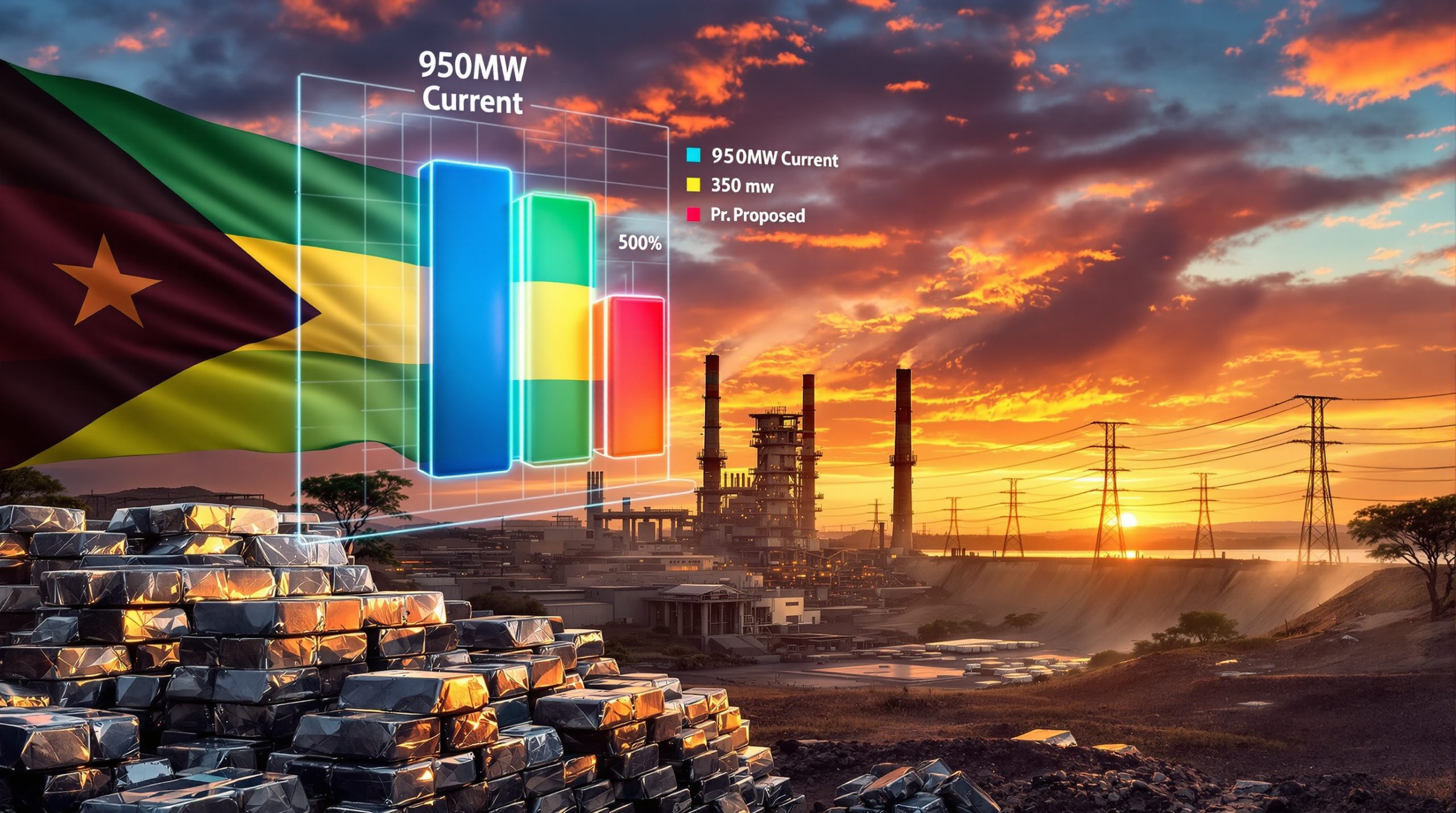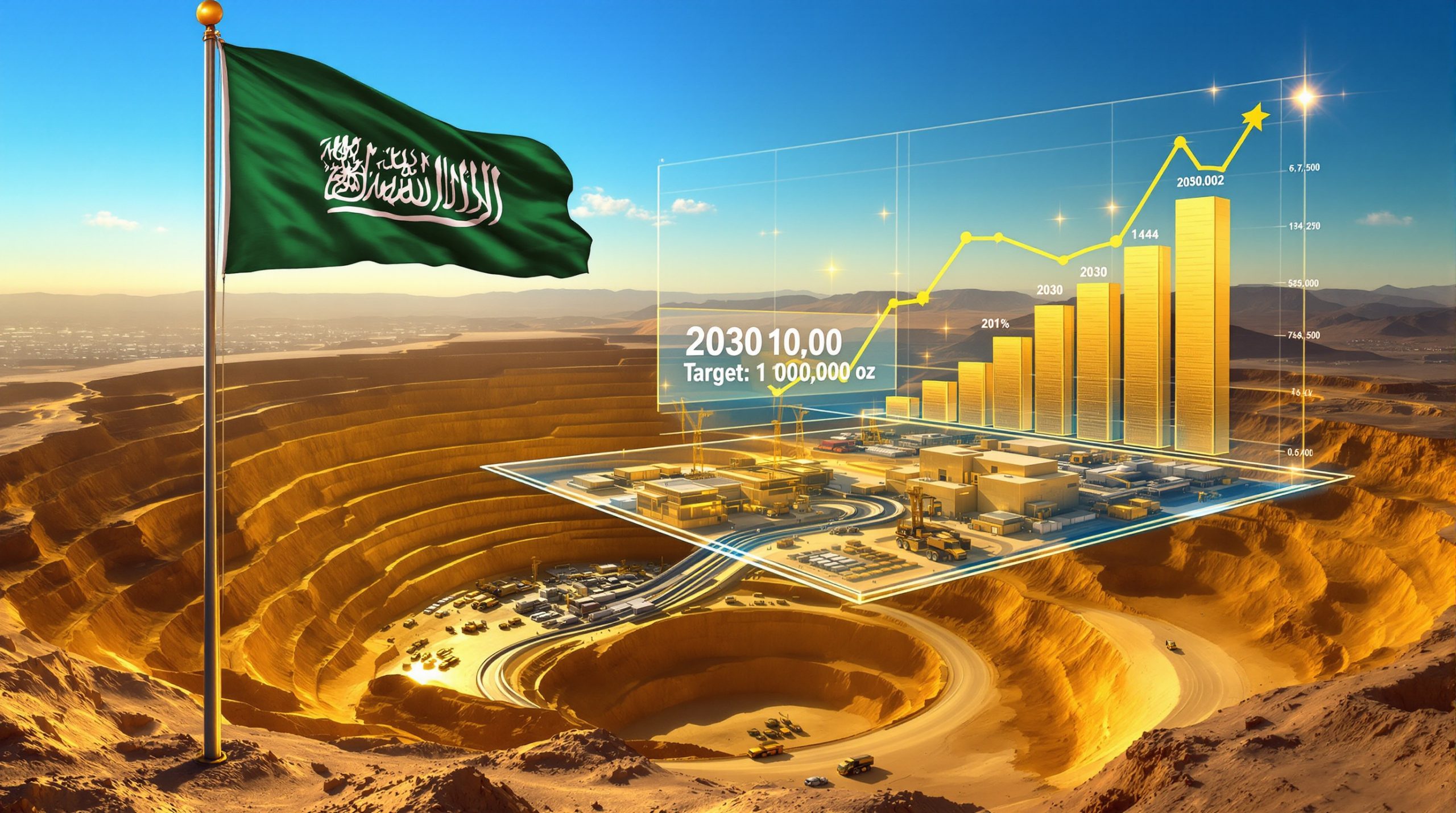Strategic Resource Security Partnership Transforms Global Supply Chains
The October 2025 bilateral framework between the United States and Australia represents a fundamental shift in how Western nations approach strategic resource security. This comprehensive partnership commits $8.5 billion across mining and processing ventures, with each government pledging minimum $1 billion investments within six months.
The US-Australia critical minerals deal establishes unprecedented cooperation between two allied nations, targeting supply chain vulnerabilities that have become increasingly apparent in recent years. This strategic alliance aims to reduce Western dependence on concentrated supply sources while building resilient networks for defence and clean energy applications.
Strategic Framework Components
| Component | US Commitment | Australia Commitment | Timeline |
|---|---|---|---|
| Direct Investment | $1+ billion | $1+ billion | 6 months |
| EXIM Letters of Interest | $2.2+ billion | – | Immediate |
| Project Pipeline Value | $8.5 billion total | $8.5 billion total | Multi-year |
| Governance Structure | Joint oversight | Joint oversight | Ongoing |
The framework establishes a sophisticated governance mechanism designed to accelerate project implementation whilst maintaining strategic oversight. This structure enables rapid response to emerging supply vulnerabilities and ensures coordinated deployment of resources across both nations.
Addressing China's Market Dominance Through Strategic Diversification
China currently controls approximately 85% of global rare earth processing capacity, creating significant supply chain vulnerabilities for Western economies. The US-Australia framework directly counters this concentration through diversified sourcing strategies that reduce geopolitical risks.
Recent market data reveals the extent of this challenge. China's shipments of rare earth magnets fell 6.1% in September from August, according to customs data, demonstrating the volatility inherent in concentrated supply chains. This decline has stoked supply chain fears across industries dependent on these critical materials.
Supply Chain Vulnerability Analysis
The partnership targets critical gaps in Western supply chains by establishing alternative processing capabilities outside Chinese control. This approach addresses several key vulnerabilities:
- Geographic concentration risks in current supply networks
- Political leverage exercised through export controls
- Price manipulation potential in concentrated markets
- Technology transfer requirements imposed by dominant suppliers
- Quality control concerns in complex supply chains
Market analysts note that even with substantial new investments, Western buyers would require years to significantly reduce dependence on Chinese suppliers. The processing infrastructure and technical expertise built over decades cannot be replicated overnight, making this partnership a long-term strategic commitment rather than a short-term solution.
Priority Materials Driving Strategic Investment
The framework encompasses a comprehensive range of strategic materials, each selected based on supply chain vulnerability assessments and national security considerations. These materials form the backbone of modern defence systems, renewable energy infrastructure, and advanced manufacturing processes.
Critical Minerals Breakdown
Rare earth reserves remain the highest priority, essential for permanent magnets in wind turbines and electric vehicles. Current market dynamics show significant price volatility, with processing capabilities concentrated in just a few facilities globally.
Lithium represents a core component for battery technologies and energy storage systems. Growing demand from electric vehicle manufacturers has created supply constraints, making diversified production essential for energy security.
Gallium proves critical for semiconductor manufacturing and defence electronics. The metal's unique properties make it irreplaceable in certain high-tech applications, yet production remains concentrated in limited geographic regions.
Graphite serves as a required material for battery anodes and advanced manufacturing processes. Natural and synthetic graphite markets face supply chain pressures as battery demand accelerates globally.
Additional priority materials include:
- Magnesium for lightweight aerospace and automotive applications
- Titanium for high-strength defence and aerospace sectors
- Scandium for specialty alloys and fuel cell technologies
These materials share common characteristics: limited supply sources, complex processing requirements, and critical importance to national security applications.
Flagship Projects Receiving Investment Commitments
Several high-impact ventures have been identified as cornerstone initiatives within the partnership framework, each designed to address specific supply chain vulnerabilities whilst demonstrating commercial viability.
Alcoa-Sojitz Gallium Recovery Initiative
This Western Australia project receives $200 million in concessional financing from Australia, plus equity investments from the US and Japan. The facility targets 10% of global gallium supply, addressing critical semiconductor industry needs through innovative recovery technologies.
Project Specifications:
- Location: Western Australia industrial corridor
- Investment: $200 million Australian concessional finance
- Target Output: 10% of global gallium production capacity
- Strategic Partners: United States, Japan, Australia
- Technology Focus: Advanced gallium recovery from aluminium processing
The project leverages existing aluminium smelting operations to extract gallium as a byproduct, creating economic efficiencies whilst reducing environmental impact. This approach demonstrates how strategic partnerships can optimise existing industrial infrastructure for critical mineral production.
Arafura Nolans Rare Earths Development
The Northern Territory project secures $100 million Australian investment, positioning to deliver 5% of worldwide rare earth output through integrated mining and processing operations. This facility represents one of the few fully integrated rare earth projects outside Chinese control.
Development Details:
- Location: Northern Territory, Australia
- Investment: $100 million Australian commitment
- Production Target: 5% of global rare earth supply
- Integration: Complete value chain from mining to processing
- Timeline: Multi-phase development over 3-5 years
The Nolans project particularly focuses on neodymium and praseodymium production, essential elements for permanent magnets used in wind turbines and electric vehicle motors. This strategic focus aligns with growing clean energy demand whilst reducing supply chain dependencies.
US Export-Import Bank's Strategic Financial Support
EXIM Bank's involvement provides crucial financial backing through structured Letters of Interest worth over $2.2 billion, covering diverse critical mineral projects across Australia. This commitment represents the largest single allocation for critical minerals projects in the institution's history.
EXIM Bank Commitment Structure
The seven Letters of Interest span multiple strategic materials, demonstrating comprehensive support for supply chain diversification efforts. These financial instruments provide project developers with confidence to proceed with large-scale investments whilst ensuring US strategic interests are protected.
Furthermore, the US EXIM loan insights reveal how strategic financing mechanisms can accelerate critical mineral development. The EXIM Bank's $2.2 billion commitment underscores the strategic importance of US-Australia resource cooperation, providing unprecedented financial backing for critical minerals projects that will reshape global supply chains.
Financing Mechanisms:
- Direct loans for major infrastructure projects
- Loan guarantees reducing private sector investment risks
- Export credit facilities for equipment and technology
- Working capital support for operational phases
- Political risk insurance covering geopolitical uncertainties
This financing structure addresses key barriers that have historically limited Western critical mineral project development, particularly the high capital requirements and long payback periods typical in mining ventures.
Governance Framework for Implementation Oversight
A dedicated US-Australia Critical Minerals Supply Security Response Group will coordinate implementation, featuring leadership from the US Secretary of Energy and Australian Minister for Resources. This governance structure enables rapid response to supply vulnerabilities whilst fast-tracking approved projects through regulatory processes.
Operational Framework Design
The governance group maintains authority to identify emerging risks and allocate resources accordingly, creating a dynamic response capability that can adapt to changing market conditions and geopolitical developments.
Key Responsibilities:
- Supply chain vulnerability assessment through continuous monitoring
- Project implementation acceleration via regulatory coordination
- Cross-border regulatory harmonisation reducing bureaucratic delays
- Strategic stockpiling decisions based on risk assessments
- Market disruption response protocols for crisis management
- Technology sharing agreements optimising innovation transfer
This structure represents a significant evolution in international resource cooperation, moving beyond traditional trade relationships toward integrated strategic planning and implementation.
Comparative Analysis with Global Critical Minerals Partnerships
The US-Australia framework represents the most comprehensive bilateral critical minerals agreement to date, exceeding previous partnerships in both scope and financial commitment. This agreement sets new precedents for allied cooperation in resource security.
International Partnership Comparison
| Partnership | Investment Value | Timeline | Strategic Focus | Geographic Scope |
|---|---|---|---|---|
| US-Australia | $8.5 billion | Multi-year | Defence & clean energy | Full value chain |
| US-Canada | $2.1 billion | 3 years | Battery materials | Mining emphasis |
| EU-Australia | €1.8 billion | 5 years | Industrial applications | Processing focus |
| Japan-Australia | $1.4 billion | 4 years | Technology metals | Research cooperation |
The scale and scope differences highlight how the US-Australia partnership addresses systemic supply chain vulnerabilities rather than targeting specific commodity sectors. This comprehensive approach reflects the growing recognition that critical mineral security requires integrated solutions spanning multiple materials and processing stages.
Additionally, the critical minerals energy transition demonstrates how these partnerships support broader clean energy goals whilst enhancing national security objectives.
Long-Term Strategic Market Implications
This partnership fundamentally reshapes global critical minerals markets by establishing Western-controlled supply chains independent of Chinese influence. The implications extend far beyond bilateral trade relationships, potentially catalysing broader realignment in global resource flows.
Geopolitical Impact Assessment
The framework creates precedent for allied nations to coordinate resource security strategies, potentially inspiring similar agreements across the Indo-Pacific region. This approach transforms critical minerals from commercial commodities into national security assets requiring strategic management.
Strategic Transformation Elements:
- Alliance-based supply networks replacing market-driven sourcing
- Security premiums incorporated into pricing mechanisms
- Technology sharing agreements accelerating innovation
- Coordinated stockpiling strategies enhancing crisis resilience
- Joint research initiatives developing next-generation processing technologies
Market Transformation Effects
Supply chain resilience improvements extend across multiple dimensions, creating systemic changes in how critical minerals markets operate. These transformations affect pricing mechanisms, investment patterns, and competitive dynamics globally.
Resilience Improvements:
- Reduced single-point-of-failure risks through geographic diversification
- Enhanced processing capacity outside concentrated control structures
- Improved supply security for defence and clean energy applications
- Greater price stability through competitive sourcing alternatives
- Advanced quality control through integrated Western supply chains
Implementation Timeline and Investor Expectations
Implementation follows a carefully structured phased approach with immediate, medium-term, and long-term milestones designed to deliver measurable supply chain improvements whilst maintaining investor confidence throughout the development process.
Phased Implementation Strategy
Phase 1 (0-6 months): Foundation Establishment
- $2 billion minimum government commitments deployed immediately
- EXIM Letters of Interest activated for priority projects
- Governance structure establishment with operational protocols
- Priority project selection finalisation through technical reviews
- Regulatory framework alignment between partner nations
Phase 2 (6-24 months): Development Acceleration
- Construction commencement on flagship mining and processing projects
- Offtake agreement negotiations securing long-term supply contracts
- Strategic stockpiling programme launch building reserve capacities
- Technology transfer protocols implementation for shared innovations
- Workforce development programmes addressing skilled labour requirements
Phase 3 (2-5 years): Production Integration
- First production deliveries from newly developed facilities
- Full supply chain integration across partner nations
- Market share targets achievement in priority materials
- Partnership expansion evaluation including additional allied nations
- Performance assessment and strategy optimisation based on results
Global Critical Minerals Pricing Impact Analysis
The partnership's substantial scale suggests potential market stabilisation effects as Western supply chains reduce dependence on volatile export policies from concentrated suppliers. These changes could fundamentally alter pricing dynamics across critical mineral markets.
Price Stability Mechanisms
Coordinated stockpiling and guaranteed offtake agreements provide buffer mechanisms against supply disruptions, whilst increased production capacity should moderate price volatility over time. These mechanisms represent sophisticated approaches to market management in strategic material sectors.
Market Stabilisation Factors:
- Strategic reserve management smoothing supply-demand imbalances
- Long-term contracting reducing price volatility through predictable demand
- Diversified supplier base eliminating single-source leverage effects
- Quality standardisation ensuring consistent product specifications
- Technology optimisation reducing production costs through innovation
Economic Impact Projections
Market analysts project several significant changes in critical mineral pricing patterns as the partnership matures and alternative supply sources become operational.
Projected Market Changes:
- Reduced price volatility for key materials through diversified sourcing
- Enhanced supply security premiums reflecting improved reliability
- Competitive pressure effects on existing monopolistic suppliers
- Long-term price moderation through increased global production capacity
- Investment flow redirection toward allied nation development projects
Recent market conditions support these projections, with commodity prices showing increased sensitivity to geopolitical developments. The gold price analysis recently showed gold futures reaching $4,137.6 per ounce, whilst platinum surged 6.4% to $1,646.03 per ounce in the largest intraday jump since 2020, demonstrating how supply security concerns drive precious metal valuations.
Technology Innovation and Processing Advancement
The partnership emphasises technological innovation in critical mineral processing, recognising that advanced processing capabilities represent the key competitive advantage in these markets. Traditional mining operations alone cannot address strategic supply chain vulnerabilities without corresponding processing infrastructure.
Processing Technology Development
Advanced processing technologies under development through the partnership include innovative separation techniques, environmental remediation methods, and efficiency optimisation systems. These technologies address both economic and environmental challenges that have historically limited Western critical mineral development.
Innovation Focus Areas:
- Hydrometallurgical processing improvements reducing environmental impact
- Selective extraction technologies optimising valuable element recovery
- Waste reduction systems minimising processing byproducts
- Energy efficiency optimisation lowering operational costs
- Quality control automation ensuring consistent product specifications
- Rare earth separation advancement breaking Chinese technological advantages
These technological developments represent critical competitive advantages that could reshape global market dynamics beyond simple supply diversification, creating sustainable competitive positions for Western producers.
Strategic Risk Assessment and Mitigation
Whilst the partnership addresses significant supply chain vulnerabilities, implementation faces substantial challenges requiring careful risk management and realistic timeline expectations. These risks span technical, financial, regulatory, and geopolitical dimensions.
Implementation Risk Factors
Technical Challenges:
- Complex processing requirements for many critical materials
- Skilled workforce shortages in specialised mining and processing sectors
- Environmental compliance costs and timeline extensions
- Technology transfer complexities in advanced processing methods
- Quality control maintenance across diverse production facilities
Financial and Market Risks:
- Capital intensity requirements exceeding initial projections
- Commodity price volatility affecting project economics
- Competition from established low-cost producers
- Extended payback periods testing investor patience
- Currency fluctuation impacts on international investments
Consequently, modern mine planning becomes crucial for addressing these implementation challenges whilst maintaining environmental and social governance standards.
External Market Context
The strategic importance of this partnership becomes evident when considering broader geopolitical developments. According to the Australian government's framework announcement, this agreement represents a historic milestone in bilateral cooperation that strengthens both nations' economic security.
Furthermore, analysis from ABC News on critical minerals industry dynamics highlights how this partnership positions Australia as a key alternative to Chinese-dominated supply chains, potentially reshaping global critical minerals markets.
Disclaimer: This analysis involves forecasts and projections based on current market conditions and policy commitments. Actual outcomes may differ significantly due to changing geopolitical circumstances, technological developments, market dynamics, and implementation challenges. Investors should conduct independent due diligence before making investment decisions related to critical minerals projects.
The US-Australia critical minerals deal represents a transformative approach to strategic resource security, establishing frameworks that could reshape global supply chains for decades. Success will depend on sustained political commitment, technological innovation, and effective coordination between partner nations, whilst managing the substantial risks inherent in such ambitious undertakings.
Looking to Capitalise on Critical Minerals Investment Opportunities?
Discovery Alert's proprietary Discovery IQ model delivers real-time alerts on significant critical minerals discoveries across the ASX, instantly empowering subscribers to identify actionable opportunities ahead of the broader market. Understand why historic discoveries can generate substantial returns by visiting Discovery Alert's dedicated discoveries page, and begin your 30-day free trial today to position yourself ahead of the market.




